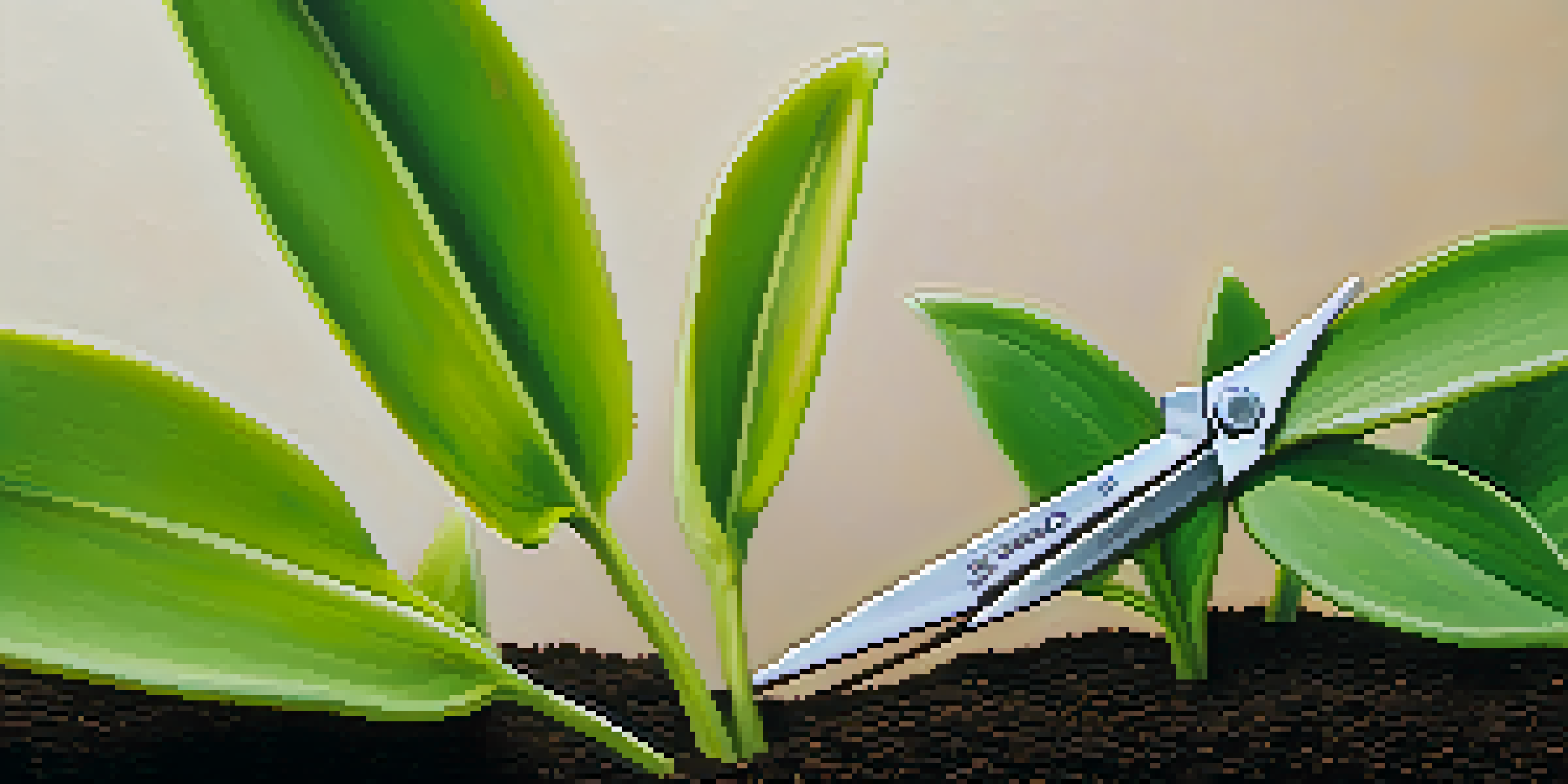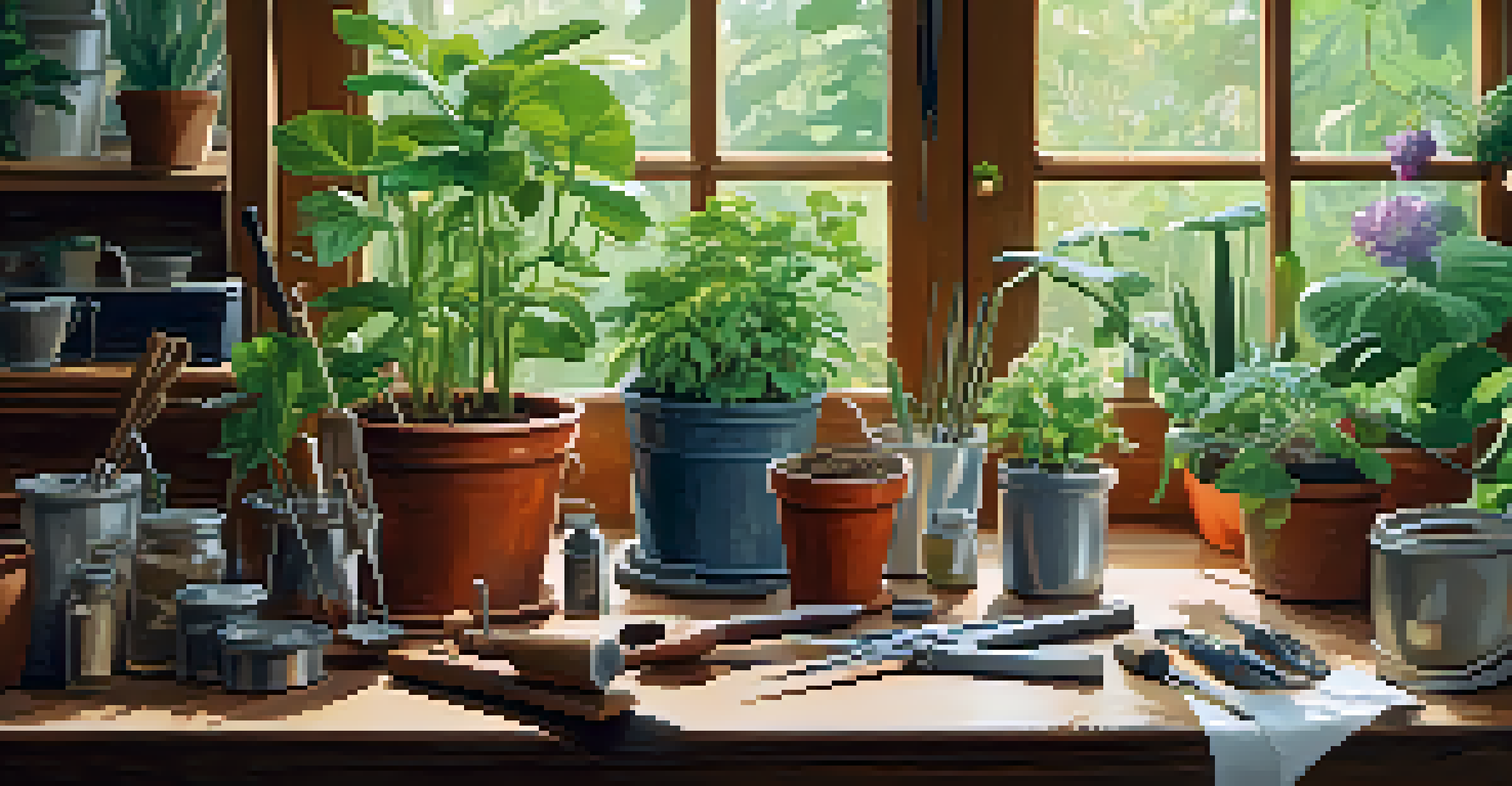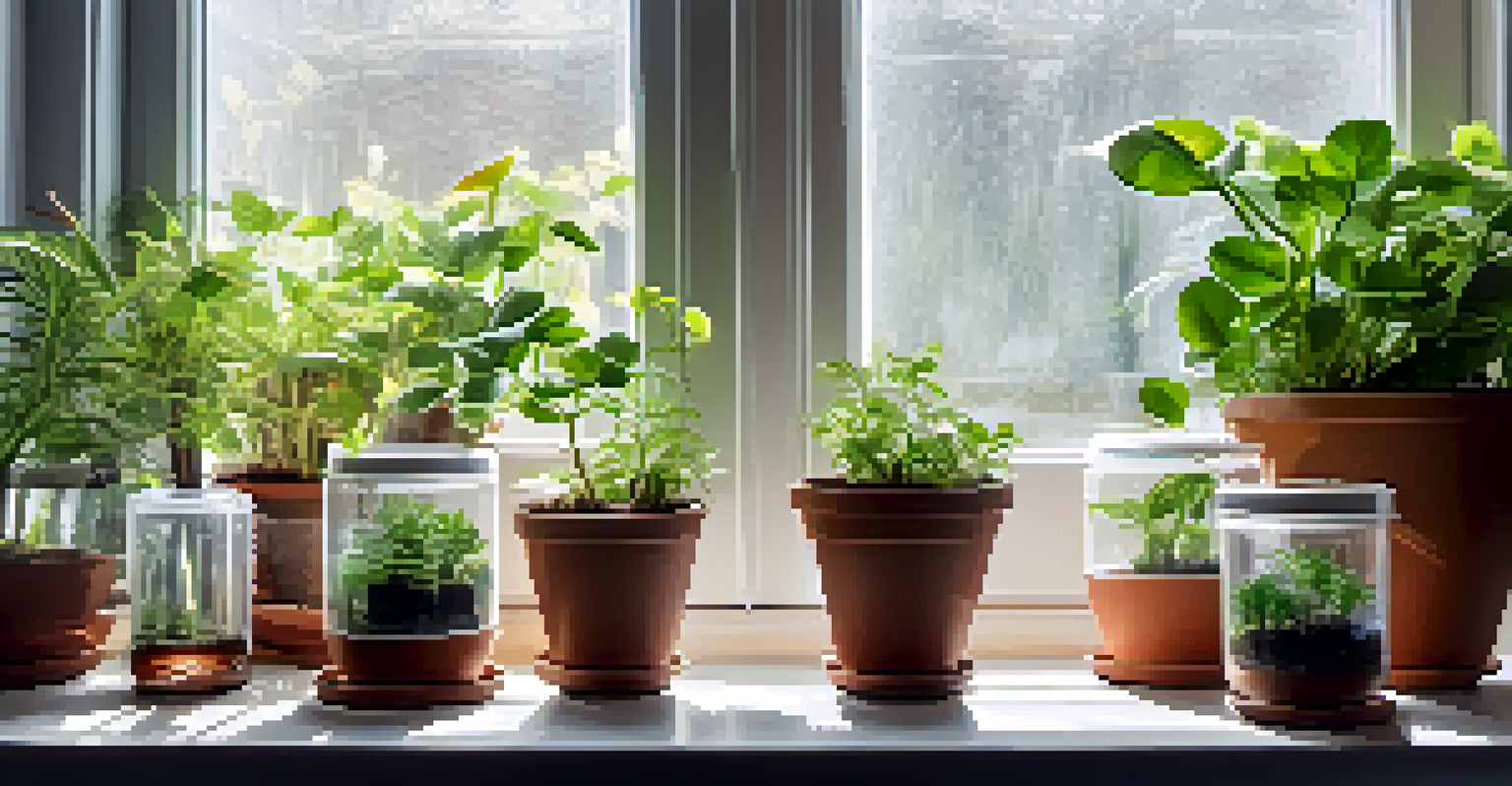Mastering Cuttings: Techniques for Plant Propagation

Understanding Plant Cuttings: A Beginner's Guide
Plant cuttings are sections of a plant used to grow new ones. This method is popular among gardeners because it allows for the propagation of identical plants without seeds. Just think of it as cloning your favorite plant, which can be both rewarding and fun!
To plant a garden is to believe in tomorrow.
Different types of cuttings exist, including stem cuttings, leaf cuttings, and root cuttings. Each type has its unique process and benefits, depending on the plant species. For instance, stem cuttings are commonly used for plants like pothos or succulents, while leaf cuttings work well for plants like African violets.
Mastering the art of cuttings is essential for anyone looking to expand their garden or share plants with friends. With some basic knowledge and patience, you can successfully propagate new plants from cuttings and enjoy the satisfaction of watching them grow.
Choosing the Right Plant for Propagation
Not all plants are suitable for propagation via cuttings, so it's important to choose wisely. Consider starting with hardy plants that are known to root easily, such as rosemary, basil, or spider plants. These plants are forgiving and often yield successful results for beginners.

Before you take a cutting, ensure that the parent plant is healthy and vigorous. A stressed or diseased plant will likely produce weak cuttings that struggle to thrive. Think of it like baking a cake; using fresh and quality ingredients will yield a much better result!
Mastering Plant Cuttings Basics
Understanding the types of cuttings and their specific processes is essential for successful plant propagation.
Once you've selected a suitable plant, it's time to prepare for cutting. Gather your tools and make sure the plant is well-watered before taking cuttings, as this will help the plant recover more quickly after the process.
Essential Tools for Taking Cuttings
Having the right tools on hand makes the cutting process much smoother. A sharp pair of scissors or pruning shears is essential for making clean cuts, which helps reduce the risk of disease. Think of it like using a knife to slice bread; a clean cut prevents squishing and ensures a better outcome.
Gardening is a way of showing that you believe in tomorrow.
Additionally, you'll need pots or containers filled with a suitable growing medium, such as potting soil or perlite. Using a well-draining medium is crucial, as it prevents the cuttings from sitting in water, which can lead to rot. If you’re unsure, a mix of perlite and peat can work wonders!
Lastly, having rooting hormone on hand can significantly improve your success rates. While it's not strictly necessary, this powder or gel encourages faster root growth, giving your cuttings a better chance of thriving.
Taking Cuttings: Step-by-Step Process
Now that you're equipped with the right tools, let’s dive into the process of taking cuttings. Start by selecting a healthy stem from the parent plant that has at least a few leaves. Using your sharp shears, cut a section about 4-6 inches long, just below a leaf node. This node is where roots will eventually sprout!
Once you've made your cutting, remove any leaves from the lower half to minimize water loss and encourage root growth. If you're using rooting hormone, dip the cut end into the powder before placing it in your prepared growing medium. This step can greatly enhance your chances of success.
Choosing Hardy Plants for Success
Selecting healthy, hardy plants like rosemary or spider plants increases the likelihood of successful cuttings.
Finally, water the cutting gently and place it in a warm, bright location, but out of direct sunlight. Covering the cutting with a plastic bag or a clear container can help maintain humidity and create a mini greenhouse effect, which is beneficial for root development.
Caring for Your Cuttings: Tips for Success
Once you've taken your cuttings, caring for them properly is key to ensuring they thrive. Keep the soil moist, but not soggy, as overwatering can lead to rot. Think of it as balancing a seesaw; too much water on one side can tip the entire thing over!
Regularly check for signs of growth, such as new leaves or roots emerging. This is a good indicator that your cutting is healthy and adapting to its new environment. Patience is essential during this stage, as it can take a few weeks for roots to establish and new growth to appear.
If you notice any yellowing leaves or mold, it's crucial to address these issues promptly. Remove affected areas and adjust your care routine as needed. Remember, every plant is unique, so be prepared to adapt your approach based on how your cuttings respond.
Transplanting Cuttings: When and How to Do It
Once your cuttings have developed a healthy root system, it’s time to think about transplanting them into larger pots. This typically happens when you see roots emerging from the drainage holes or if the cutting has grown several new leaves. Think of it as moving from a cozy apartment to a spacious house; they need room to grow!
To transplant, gently remove the cutting from its current container, taking care not to damage the roots. Prepare a larger pot with fresh potting soil and create a small hole for the roots. Place the cutting in the hole and gently pack the soil around it to provide support.
Caring for Cuttings is Crucial
Proper care, including monitoring moisture and growth, is key to ensuring that your cuttings thrive and develop roots.
After transplanting, give your new plant a good watering and place it in a spot with indirect sunlight. Continue to monitor its growth and adjust your care routine as it settles into its new home.
Common Mistakes in Plant Propagation and How to Avoid Them
Even seasoned gardeners can face challenges when propagating cuttings. One common mistake is using cuttings that are too woody or mature, which can hinder root development. Always opt for younger, softer stems that are more likely to take root successfully.
Another pitfall is overwatering the cuttings, which can lead to mold and rot. Remember, it’s better to underwater than to overwater your cuttings until they establish roots. Keeping the soil slightly moist is key, and you can always add more water as needed.

Lastly, be patient! Propagation takes time, and not every cutting will result in a new plant. Embrace the learning process and don't be discouraged by setbacks. Each attempt teaches you something valuable about your gardening journey.